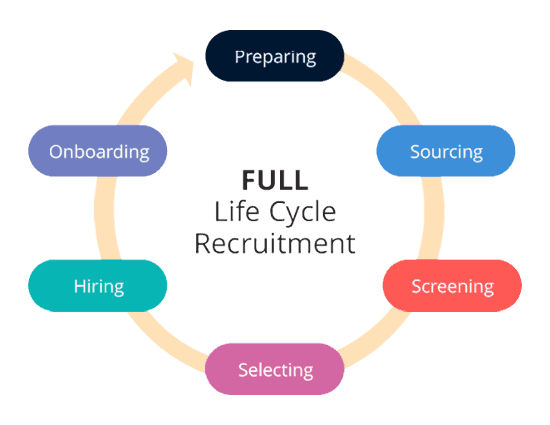Key Stages of the Recruitment Process
If you have been charged with responsibility to recruit a new Lay employee to work at your Church, Circuit or District, this page will guide you through the stages in the recruitment process, including the necessary forms and templates to use.

Stage 1: Preparing
Begin by thinking of what are the needs of the Church and what characteristics, skills, and traits would make up your perfect hire. This will help guide and make your end to end recruitment process easier. Please also see the Case Studies on Reviewing ministry and mission needs. The next step is reviewing the existing role documents or for a new role writing a job description and person specification.
Stage 2: Sourcing
Using different methods for sourcing candidates can be highly effective. Consider using an internet platform (web sourcing), a variety of social medial channels (such as Facebook, Twitter, and LinkedIn etc.) and Job boards. Also consider internal recruiting for finding candidates among your existing staff who have the advantage of the internal knowledge of the organisation.
Stage 3: Screening
The goal of this is to narrow down your applicants to the very best candidates and begins with reviewing employment applications forms and or CVs. The goal of reviewing these documents is to find applicants whose qualifications, skills and experiences best match the requirements of the vacant position. Candidates who make this cut are shortlisted and invited to a face to face interview.
Stage 4: Selecting
Selecting the very best candidate is the most critical part of the recruiting process. No matter how good your potential candidates may seem on the paper, meeting them in person is your ultimate opportunity to determine if they have the perfect combination of knowledge, skills and experience you are looking for. It is recruitment best practice to use a variety of candidate selection methods that best fit your hiring needs, including written exercise and or, presentation etc.
Stage 5: Hiring
Hiring stage of the recruitment cycle consists of two main activities: job offer and pre-employment checks. Once you’ve found your ideal candidate, it’s time to notify them by phone followed by an official job offer letter. A well-structured job offer clarifies all hiring terms. It includes precise information on compensation and benefits, working hours and contract length, as well as the employment start date. Sometimes a candidate won’t accept your job offering immediately, so further negotiations will be needed in order to reach a mutually satisfying employment contract.
Stage 6: Onboarding
Onboarding is the final and perhaps the most crucial stage of the recruitment process and it’s all about making the new employees feel welcomed and helping them ease into their new working place by teaming up with their new co-workers. Great onboarding starts with introductions, then moves on to orientation and ends up with training. When combined these activities gives the right formula which will guarantee a great start for any new employee.